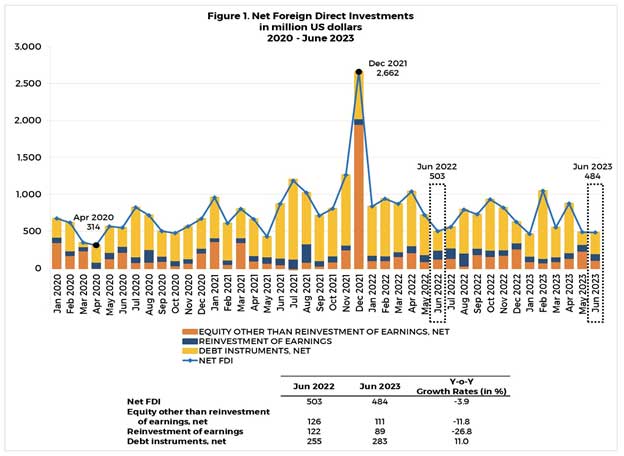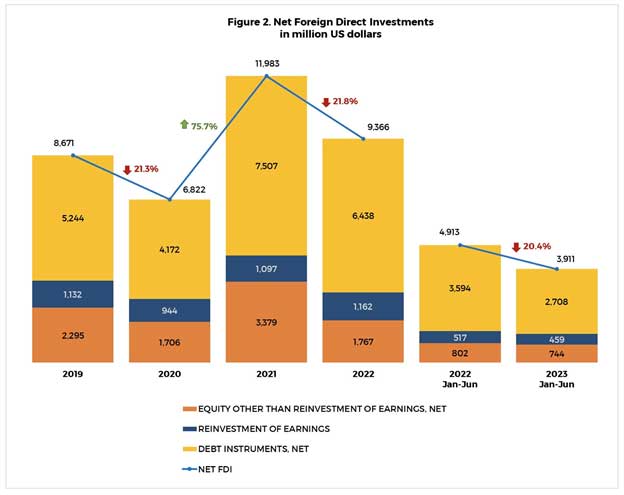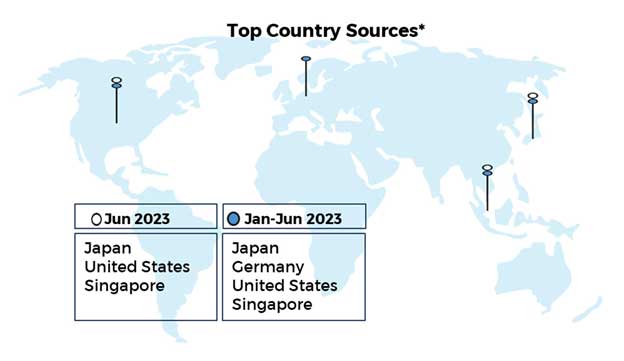Foreign direct investment (FDI) recorded US$484 million net inflows in June 2023, lower by 3.9 percent from the US$503 million net inflows in the same month last year (Figure 1).1, 2
This was due to the recorded declines in non-residents’ net investments in equity capital (other than reinvestments of earnings) and their reinvestment of earnings, by 11.8 percent (from US$126 million to US$111 million) and by 26.8 percent (from US$122 million to US$89 million), respectively.
Meanwhile, net investments in debt instruments increased by 11.0 percent at US$283 million from US$255 million in June 2022.[1]

Bulk of the equity capital placements in June 2023 were sourced primarily from Japan, the United States, and Singapore. These were infused largely to the 1) manufacturing; 2) real estate; and 3) information and communication industries.
For the first half of the year, FDI net inflows decreased by 20.4 percent to US$3.9 billion from the US$4.9 billion net inflows recorded in the comparable period in 2022 (Figure 2). The slowdown in FDI may be due largely to investor concerns over weak growth prospects amid persistent global uncertainties.


1 The BSP statistics on FDI are compiled based on the Balance of Payments and International Investment Position Manual, 6th Edition (BPM6). FDI includes (a) investment by a non-resident direct investor in a resident enterprise, whose equity capital in the latter is at least 10 percent, and (b) investment made by a non-resident subsidiary/associate in its resident direct investor. FDI can be in the form of equity capital, reinvestment of earnings, and borrowings.
2 The BSP FDI statistics are distinct from the investment data of other government sources. BSP FDI covers actual investment inflows. By contrast, the approved foreign investments data that are published by the Philippine Statistics Authority (PSA), which are sourced from Investment Promotion Agencies (IPAs), represent investment commitments, which may not necessarily be realized fully, in a given period. Further, the said PSA data are not based on the 10 percent ownership criterion under BPM6. Moreover, the BSP’s FDI data are presented in net terms (i.e., equity capital placements less withdrawals), while the PSA’s foreign investment data do not account for equity withdrawals.
[1] Net investments in debt instruments consist mainly of intercompany borrowing/lending between foreign direct investors and their subsidiaries/affiliates in the Philippines. The remaining portion of net investments in debt instruments are investments made by non-resident subsidiaries/associates in their resident direct investors, i.e., reverse investment.


















